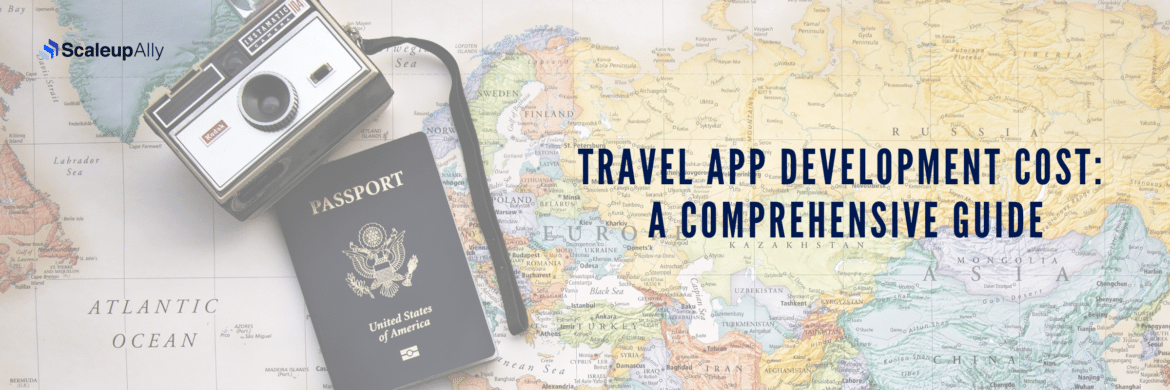
Logistics Made Smarter: Using Power BI to Optimize Supply Chain Management
Suprabhat Sen | August 25, 2023 , 9 min read
Table Of Content
Supply chain management is a critical aspect of business operations, and organizations are constantly striving to optimize their supply chains to improve efficiency, reduce costs, and enhance customer satisfaction. In today’s data-driven world, business intelligence tools like Power BI have emerged as powerful solutions for supply chain analysis and optimization. Supply chain businesses are leveraging Power BI services to build dashboards and analytics that provide them with valuable business insights, generate key performance indicators (KPIs), and drive optimization and innovation throughout the supply chain journey.
Key Takeaways
- A well-optimized supply chain drives efficiency, reduces operational costs, and significantly improves overall customer satisfaction.
- Businesses that prioritize supply chain optimization gain a strong competitive edge by streamlining processes and reducing risks.
- Power BI transforms complex supply chain data into real-time insights, enabling faster and smarter decision-making across operations.
- With intuitive dashboards, Power BI empowers managers to identify trends, detect bottlenecks, and take proactive corrective actions.
- Leveraging Power BI for analytics ensures organizations achieve continuous supply chain improvement and sustainable business growth.
The Importance of Supply Chain Optimization
- The Importance of Supply Chain Optimization
- Introducing Power BI in Supply Chain: The Game-Changer Analytics
- Planning Phase: Leveraging Power BI for Demand Forecasting and Inventory Optimization
- Sourcing and Procurement: Analyzing Supplier Performance and Promoting Ethical Sourcing
- Production and Manufacturing: Optimizing Production Processes and Enhancing Efficiency
- Warehousing and Distribution: Enhancing Inventory Management and Streamlining Logistics
- Transportation and Logistics: Optimizing Routes and Improving Delivery Performance
- Customer Service and Satisfaction: Enhancing Customer Experience and Loyalty
- Return on Investment (ROI) and Performance Measurement: Tracking KPIs and Evaluating Supply Chain Performance
- Conclusion
- FAQs: Power BI for Supply Chain Optimization
Effective supply chain management is essential for organizations to succeed in a competitive market. A well-optimized supply chain enables businesses to streamline processes, reduce costs, improve customer service, and gain a competitive edge. However, achieving supply chain optimization is often a complex task, as it requires the analysis of vast amounts of data from various sources and the ability to derive actionable insights from that data. This is where Power BI comes in.
Introducing Power BI in Supply Chain: The Game-Changer Analytics
Power BI is a leading business intelligence tool developed by Microsoft that enables organizations to visualize data, gain insights, and make data-driven decisions. With its intuitive interface and powerful features, Power BI allows supply chain managers to analyze and monitor key supply chain metrics, identify trends and patterns, and optimize operations in real-time. By leveraging Power BI for supply chain analysis, organizations can unlock valuable insights that drive optimization and innovation.
Also Read: Role of Business Intelligence in Supply Chain
Planning Phase: Leveraging Power BI for Demand Forecasting and Inventory Optimization
Effective planning is crucial for supply chain optimization. By leveraging Power BI, supply chain managers can analyze historical sales data, market trends, and customer behavior to forecast future demand accurately. Power BI’s data modeling capabilities enable organizations to create demand forecasting models that consider multiple variables and provide real-time insights into demand patterns. This helps organizations optimize inventory levels, reduce stockouts, and minimize holding costs.
Need Predictive Supply Chain Analytics?
Leverage Power BI’s forecasting tools to anticipate demand and optimise inventory.

Sourcing and Procurement: Analyzing Supplier Performance and Promoting Ethical Sourcing
Supplier management plays a vital role in supply chain optimization. With Power BI, organizations can analyze supplier performance metrics, such as on-time delivery, product quality, and lead times, to identify top-performing suppliers and address any issues proactively. Power BI’s interactive dashboards enable supply chain managers to monitor supplier performance in real-time, identify potential bottlenecks, and make data-driven decisions to optimize sourcing and procurement processes. Additionally, Power BI can help organizations promote ethical sourcing practices by tracking supplier compliance with sustainability and social responsibility standards.
Production and Manufacturing: Optimizing Production Processes and Enhancing Efficiency
Efficient production and manufacturing processes are essential for supply chain optimization. Power BI enables organizations to monitor key production metrics, such as cycle times, machine utilization, and downtime, in real-time. By visualizing production data on interactive dashboards, supply chain managers can identify bottlenecks, optimize resource allocation, and improve overall production efficiency. Power BI’s advanced analytics capabilities, such as prescriptive analytics, empower organizations to simulate different production scenarios, identify optimal production strategies, and drive continuous improvement.

Warehousing and Distribution: Enhancing Inventory Management and Streamlining Logistics
Effective warehousing and distribution are crucial for supply chain optimization. With Power BI, organizations can monitor key warehousing and distribution metrics, such as order fill rates, on-time deliveries, and inventory turnover, in real-time. Power BI’s interactive dashboards enable supply chain managers to identify inefficiencies, optimize order fulfillment processes, and improve overall logistics performance. By visualizing inventory levels, order status, and transportation data, organizations can make data-driven decisions to streamline warehousing and distribution, reduce costs, and enhance customer satisfaction.
Transportation and Logistics: Optimizing Routes and Improving Delivery Performance
Efficient transportation and logistics are essential for supply chain optimization. Power BI enables organizations to analyze transportation data, such as delivery routes, carrier performance, and fuel consumption, to optimize logistics operations. By visualizing transportation metrics on interactive dashboards, supply chain managers can identify inefficiencies, optimize routes, and improve overall delivery performance. Power BI’s advanced analytics capabilities, such as predictive analytics, enable organizations to forecast demand, optimize transportation resources, and reduce costs.
Customer Service and Satisfaction: Enhancing Customer Experience and Loyalty
Customer service and satisfaction are critical for supply chain optimization. With Power BI, organizations can analyze customer feedback, complaints, and satisfaction scores to identify areas for improvement and enhance customer experience. Power BI’s interactive dashboards enable supply chain managers to track customer satisfaction metrics in real-time, identify trends, and make data-driven decisions to improve customer service. By visualizing customer data, organizations can identify patterns, preferences, and opportunities to enhance customer loyalty and drive business growth.
Return on Investment (ROI) and Performance Measurement: Tracking KPIs and Evaluating Supply Chain Performance
Measuring ROI and evaluating supply chain performance are essential for supply chain optimization. Power BI enables organizations to track key performance indicators (KPIs) and evaluate supply chain performance in real-time. By visualizing KPIs on interactive dashboards, supply chain managers can monitor performance, identify areas for improvement, and make data-driven decisions to drive optimization and innovation. Power BI’s reporting capabilities enable organizations to generate comprehensive performance reports, analyze trends, and communicate insights effectively.
Conclusion
In today’s data-driven world, organizations must leverage business intelligence tools like Power BI to optimize their supply chains effectively. By visualizing and analyzing supply chain data in real-time, organizations can unlock valuable insights, generate key performance indicators (KPIs), and drive optimization and innovation throughout the supply chain journey. From planning to ROI measurement, Power BI empowers supply chain managers to make data-driven decisions, enhance efficiency, reduce costs, and improve customer satisfaction. With Power BI, organizations can achieve supply chain excellence and gain a competitive edge in the market.
FAQs: Power BI for Supply Chain Optimization
1. How can Power BI help organizations improve supply chain visibility? Power BI enables organizations to consolidate and visualize supply chain data from multiple sources, providing real-time visibility into supply chain operations. This visibility helps organizations identify bottlenecks, inefficiencies, and emerging risks, allowing for quick resolution and optimization.
2. Can Power BI be integrated with other supply chain management systems? Yes, Power BI can be integrated with various supply chain management systems, such as ERP systems, WMS, TMS, and CRM platforms. This integration allows organizations to consolidate data from different systems into a single dashboard, providing a comprehensive view of supply chain operations.
3. How can Power BI help organizations optimize inventory levels? Power BI enables organizations to analyze historical sales data, market trends, and customer behavior to forecast demand accurately. By optimizing inventory levels based on demand forecasts, organizations can reduce stockouts, minimize holding costs, and improve overall inventory management by using Power BI.
4. Can Power BI help organizations enhance sustainability in their supply chain? Yes, Power BI can help organizations promote sustainability in their supply chain by tracking supplier compliance with sustainability standards, analyzing carbon emissions data, and monitoring the environmental impact of logistics operations. This visibility enables organizations to make data-driven decisions to improve sustainability performance.
Related Blogs

Data Warehouse Cost Breakdown: Factors, Pricing Models & Platform Comparison
Discover how much a data warehouse costs in 2025. Explore pricing models, key factors, and platform comparisons to plan your data budget effectively.
Tarsem Singh
Nov 6 ,
14 min read

How Much Do Integrations Cost? [Pricing Breakdown & Key Insights]
Learn how much integrations cost, key factors influencing pricing, hidden expenses to avoid, and effective ways to reduce integration costs.
Tarsem Singh
Nov 6 ,
9 min read

Travel App Development Cost in 2025: A Comprehensive Guide
Travel App Development Cost: The cost to develop a travel app can range anywhere from $10,000 to $100,000 depending on the nature of the app.
Manu Jain
Oct 14 ,
23 min read


